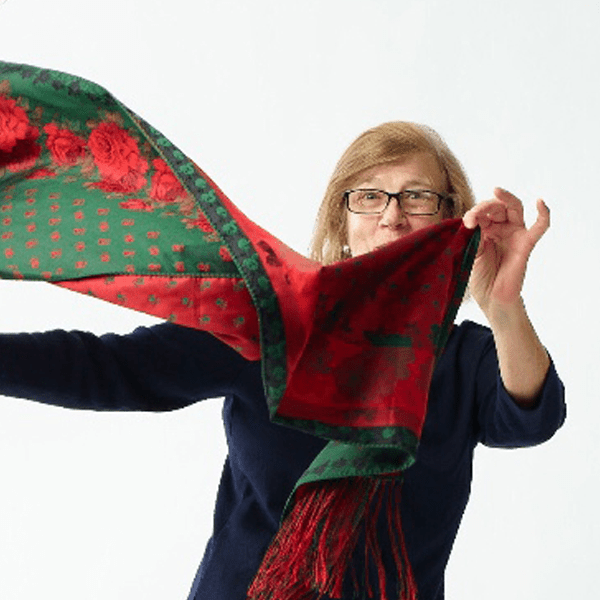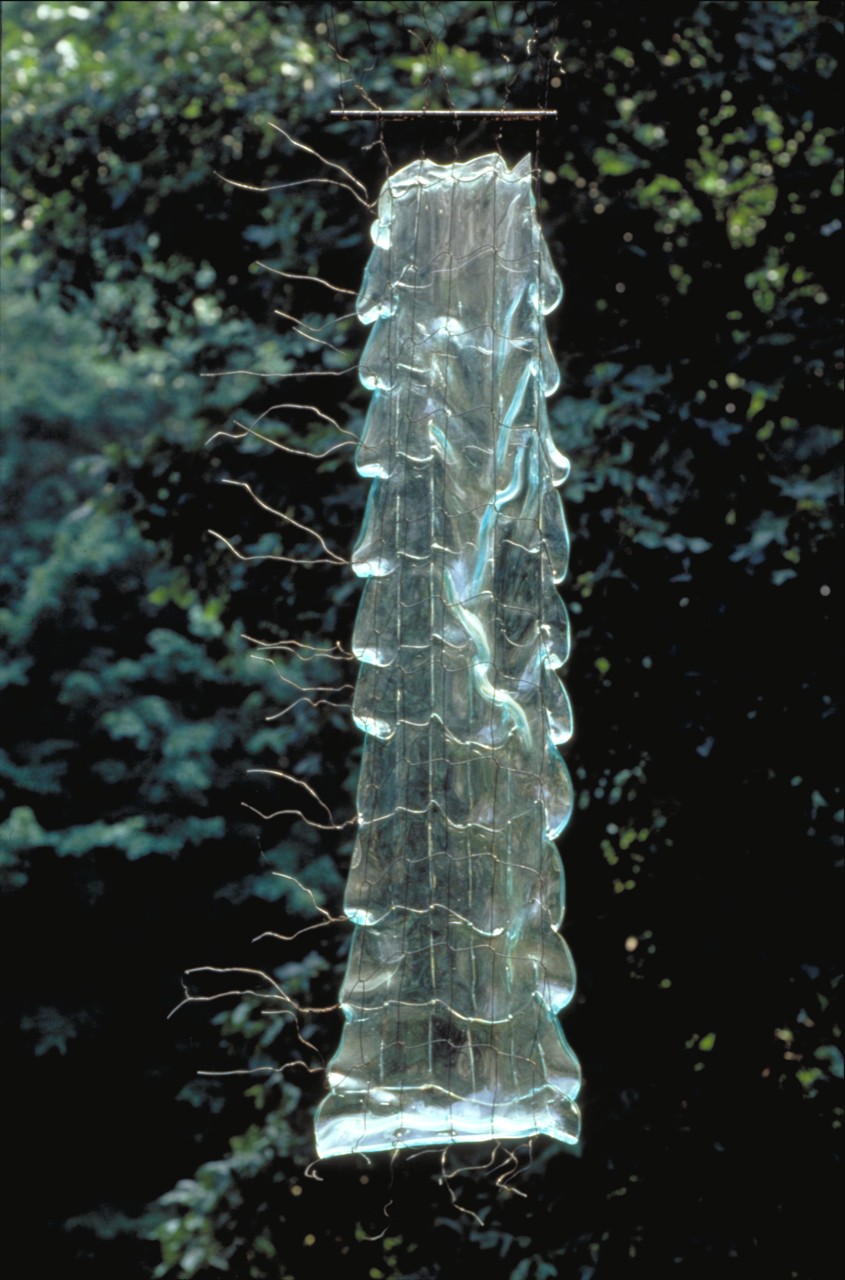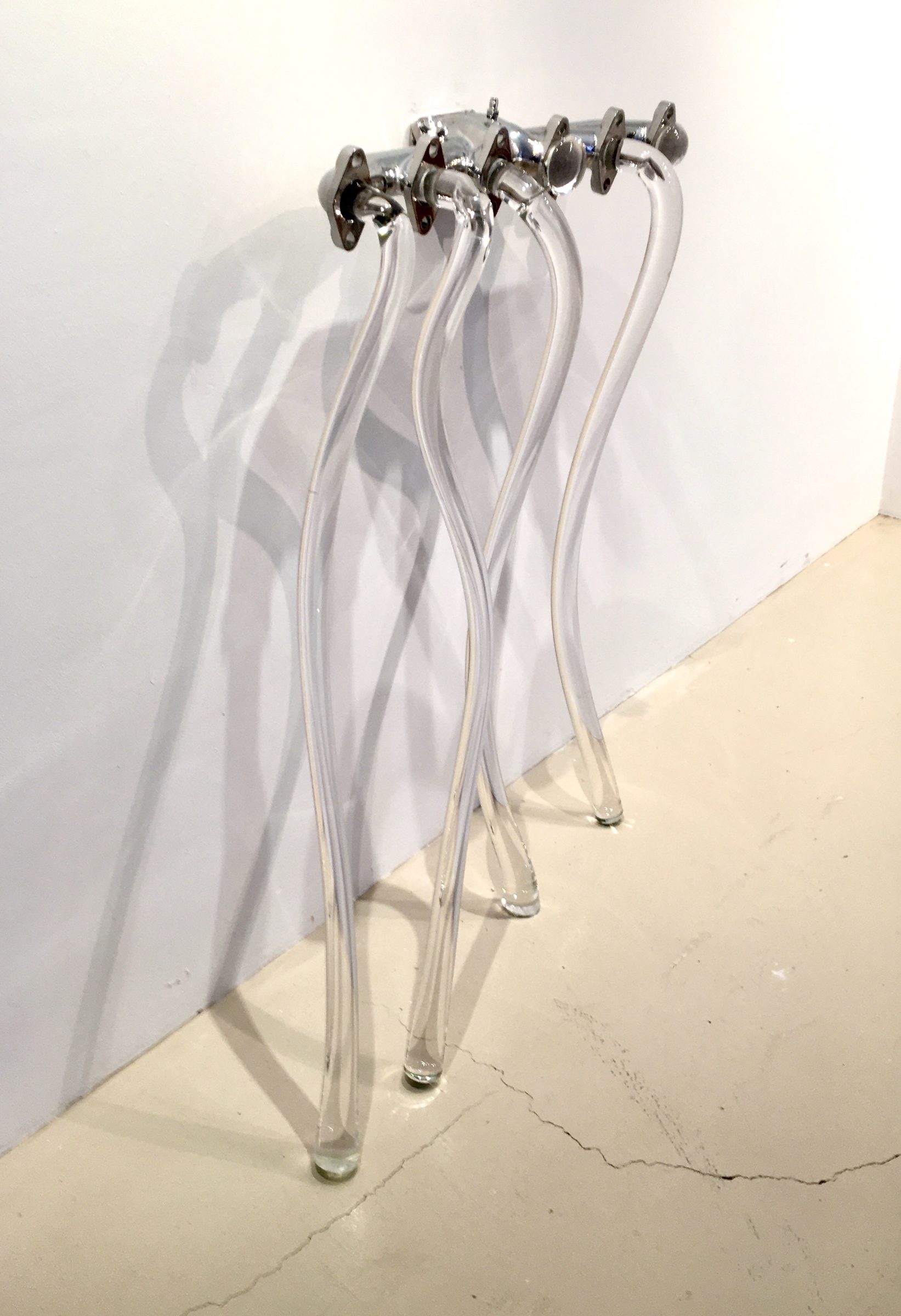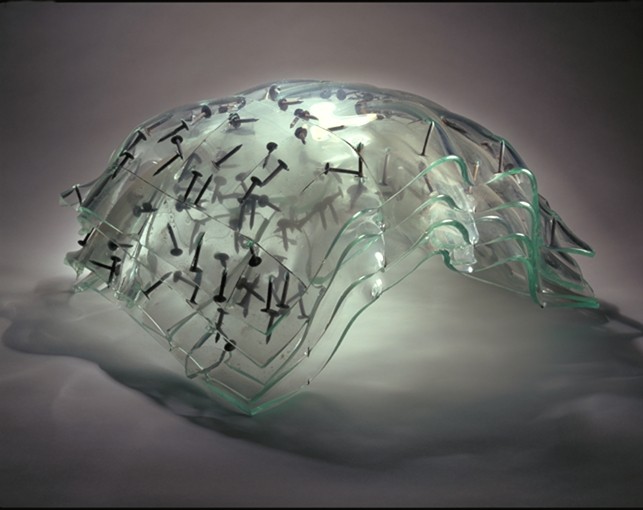
Image courtesy of Mary Shaffer. Photo: Mary van Klein.
Mary Shaffer
Sculptor Mary Shaffer (1947– ) began her career as a painter, earning a BFA in illustration from the Rhode Island School of Design (RISD) in 1965 and an MFA in painting from the University of Maryland in 1987. She began experimenting with glass in the early 1970s and is well known for developing a process for bending plate glass that she called “mid-air slumping.” Her sculptures combine such elements as wire, metal, and found objects with folded or draped clear glass layers. Shaffer taught at several academic institutions, including Wellesley College, New York University, and the California College of the Arts, as well as lecturing in over 40 museums.
Works

Couple I, 1979. Slumped glass with wire. H: 70 in, W: 32 in, D: 10 in. Image courtesy of Mary Shaffer.

Manifold, 2020. Hot glass with found autopart. H: 39 in, W: 42 in, D: 29 in. Image courtesy of Mary Shaffer.

Nail Pillow, 1972. Slumped and fused glass. H: 16 in, W: 16 in, D: 10 in. Image courtesy of Mary Shaffer.

Mary Shaffer discusses being reviewed in fine art magazines and being considered a conceptual artist.
0:47 TranscriptMary Shaffer talks about being a Wheaton fellow at the same time as Lino Tagliapietra.
00:52 TranscriptMary Shaffer discusses the importance of the Europeans in the studio glass movement.
1:07 TranscriptMary Shaffer discusses how she got involved with slumping through a suggestion by Fritz Driesbach at RISD.
02:20 TranscriptMary Shaffer discusses Sydney Cash’s work and obtaining glass from Bent Glass in Queens.
2:11 TranscriptMary Shaffer recalls Dale Chihuly inviting her to critique glass artists’ works at RISD.
01:24 Transcript